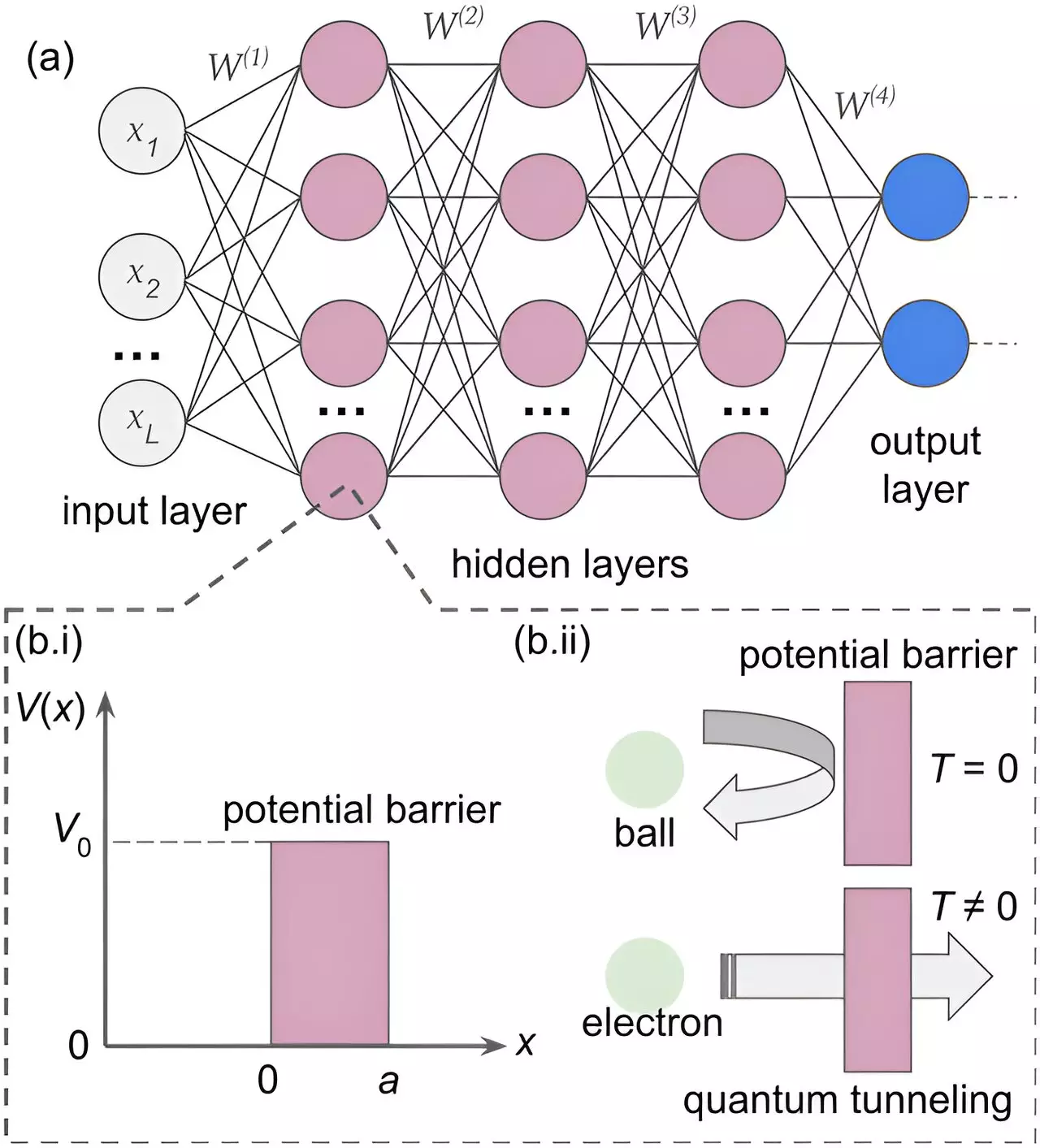The realms of optical illusions, quantum mechanics, and neural networks may seem entirely disconnected at first glance. However, groundbreaking research published in APL Machine Learning has unveiled a novel approach that merges these seemingly disparate fields. By harnessing the concept of “quantum tunneling,” a neural network has been designed to perceive optical illusions in a manner akin to human observation. This innovative work not only succeeded in replicating human interpretation of renowned optical illusions such as the Necker cube and Rubin’s vase but outperformed larger conventional neural networks typically utilized in computer vision tasks. Beyond the technological aspect, this study also delves into fundamental questions surrounding the potential attainment of human-like cognition by artificial intelligence (AI) systems.
The Intricacies of Optical Illusions
Optical illusions operate by deceiving our brains into perceiving images that may not align with reality. While the mechanics underlying these phenomena are not entirely understood, the study of optical illusions can offer invaluable insights into the functioning of our brains and the cases where they may falter, such as in dementia or extended space flights. Notably, AI researchers dedicated to emulating and investigating human vision have encountered challenges in dealing with optical illusions. Despite the advancements in computer vision systems’ capacity to recognize complex objects like artworks, comprehending optical illusions has remained a formidable obstacle.
Quantum Physics Meets Neural Networks
In addressing the limitations posed by optical illusions in AI systems, the introduction of quantum physics emerges as a key element. When the human brain processes information, it engages in the critical task of discerning useful data from extraneous information. Mimicking this cognitive function, neural networks employ multiple layers of artificial neurons for data storage and classification. These neurons are activated through signals transmitted by neighboring neurons, creating a complex network akin to the functionality of the human brain.
Quantum tunneling, a phenomenon discovered in the early 20th century, enables subatomic particles such as electrons to traverse seemingly impenetrable barriers. This groundbreaking revelation has revolutionized scientific understanding and explanation of various natural processes. In contemporary research, integrating insights from quantum mechanics into the study of human behavior and cognition has shown promising outcomes. While the extent of quantum effects in the human brain remains debatable, leveraging quantum principles to model human cognitive processes appears to be a viable approach.
Inspired by the potential benefits of quantum mechanics in neural network operations, the study investigated the implications of introducing quantum effects into a neural network. When exposed to optical illusions like the Necker cube and Rubin’s vase, the quantum-tunneling neural network exhibited a capacity to oscillate between multiple interpretations, mirroring the cognitive processes witnessed in human observation. This pivotal finding underscores the significance of quantum influences in refining the functionality and efficiency of neural networks.
The convergence of optical illusions, quantum mechanics, and neural networks opens new avenues of exploration in AI and cognitive science. Understanding how our brains navigate illusions and construct realities holds immense relevance in combating misinformation and fabrications, particularly in the era of deepfakes and fake news. Furthermore, ongoing research aims to uncover how quantum effects can elucidate social behaviors and the radicalization of opinions within social networks. Looking ahead, the integration of quantum-powered AI systems may pave the way for the development of conscious robots, offering unprecedented insights into the realms of artificial intelligence and human cognition.



Leave a Reply